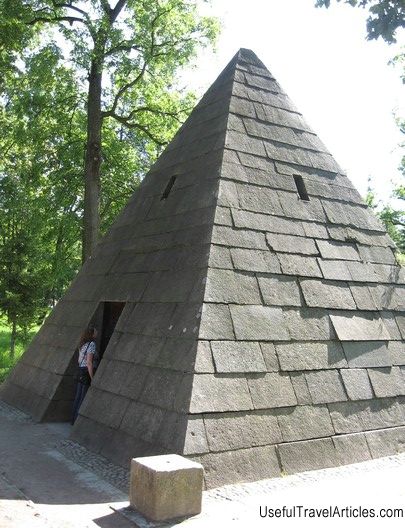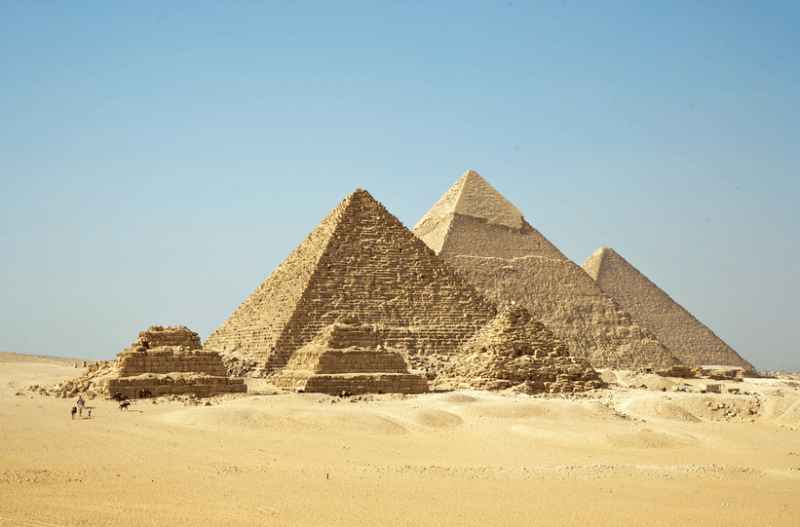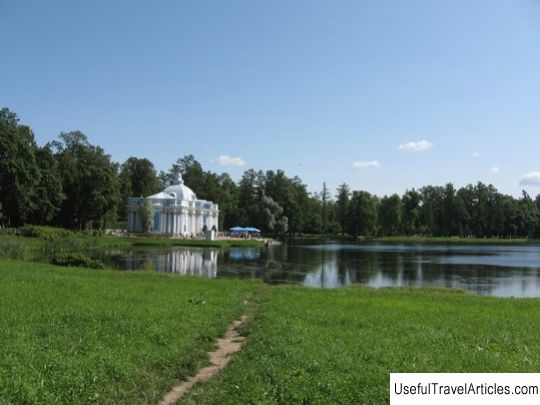Pavilion ”Pyramid” description and photos - Russia - St. Petersburg: Pushkin (Tsarskoe Selo)
Rating: 8,1/10 (500 votes) 
Pavilion "Pyramid" description and photos - Russia - St. Petersburg: Pushkin (Tsarskoe Selo). Detailed information about the attraction. Description, photos and a map showing the nearest significant objects. Photo and descriptionThe Pyramid Pavilion is one of the first pavilions of the Tsarskoye Selo park, built in the neo-Egyptian style, which became a model for such structures in Russia. Pavilions in the form of an ancient symbol of eternity - the pyramids - have become widespread in the decoration of European landscape parks. The pavilion stands on the bank of the Swan Lake. It was believed that the Roman pyramids of Cestius (a tombstone of the 1st century BC) were used in the composition of the pavilion, but in the documents of the 18th century. The "pyramid" was also called "Egyptian", and "pyramid of wild stone", and "pyramidal arbor", and "pyramid with urns", and "pyramidal mausoleum", and "Chinese". "Pyramid »Built of bricks. The author of the project is architect V.I. Neelov. Its construction dates back to 1770-1772. On the facade of the "Pyramid" there is an entrance, in the corners in 1773 four columns of pink and gray Ural marble were installed, some elements of the pedestals were made of Nyuksha porphyry. When in 1781 the "Pyramid" decayed, it disassembled. It was rebuilt by the architect C. Cameron at the same place in 1782-1783. A merchant from Sofia, Evdokim Zhdanov, produced works, supplied craftsmen and materials, Ivan Balakshin supervised the masons. Cameron kept the granite plinths and high pedestals and placed them in the same way on the sides of the pyramid, only slightly changing the decorations made in the form of vases. The entrance to the pavilion was located on the side of the Big Pond, the doorway narrows slightly upward as the very edge of the building narrows (in Neelov's Pyramid, the entrance was rectangular with a classic protruding portico, which crowned the pediment). The pavilion was specially placed a little to the side of the main path, with the aim of strolling around, as if accidentally stumbled upon it. Overgrown with moss, the green surface of this romantic structure, traditional for parks of the late 18th century, gives it features of similarity to an ancient mausoleum. The entrance to the pavilion was closed by a simple pattern with a lattice in the form of a series of thin copies. Cameron made the interior of the Pyramid somewhat differently than Neelov. He made the hall round, not rectangular, and covered it with a spherical dome with a hole in the center. The light falls through the small, second, dome from above, through the windows cut in it. The floor is covered with marble slabs. Semicircular and rectangular niches alternate on the sides of the round hall, intended for vases with ash. This makes the room seem quite spacious. The niches housed a large collection of antique urns and vases. In January 1780, Roman marble statues, columns, vases, capitals were delivered to Tsarskoe Selo from St. Petersburg. Made of different types of marble, jasper, porphyry, the collection was constantly replenished. A collection of antique marble vessels of the best incisors was also kept in the "Pyramid". This type of pavilion, which dates back to the ancient Egyptian burial structures, and so widespread in the architecture of the turn of the 18th-19th centuries, was not chosen by chance ... This is due to the fact that on the side opposite to the entrance to the building, at the foot of the pavilion, three beloved dogs of Catherine II are buried: Zemira, Tom-Anderson and Duchesa. Previously, their burial places were marked with plaques with epitaphs in white marble. The epitaph for Zemira was composed by Count Louis-Philippe de Segur, French ambassador. And for Duchesa the Empress herself composed the epitaph. The Pyramid Pavilion in Catherine Park, which is on a par with the monuments of military glory, has formed a new type of historical emotion when major historical events become equal to personal preferences.    We also recommend reading Museum of the headquarters of the Kotovsky cavalry brigade description and photos - Moldova: Tiraspol Topic: Pavilion ”Pyramid” description and photos - Russia - St. Petersburg: Pushkin (Tsarskoe Selo). |




